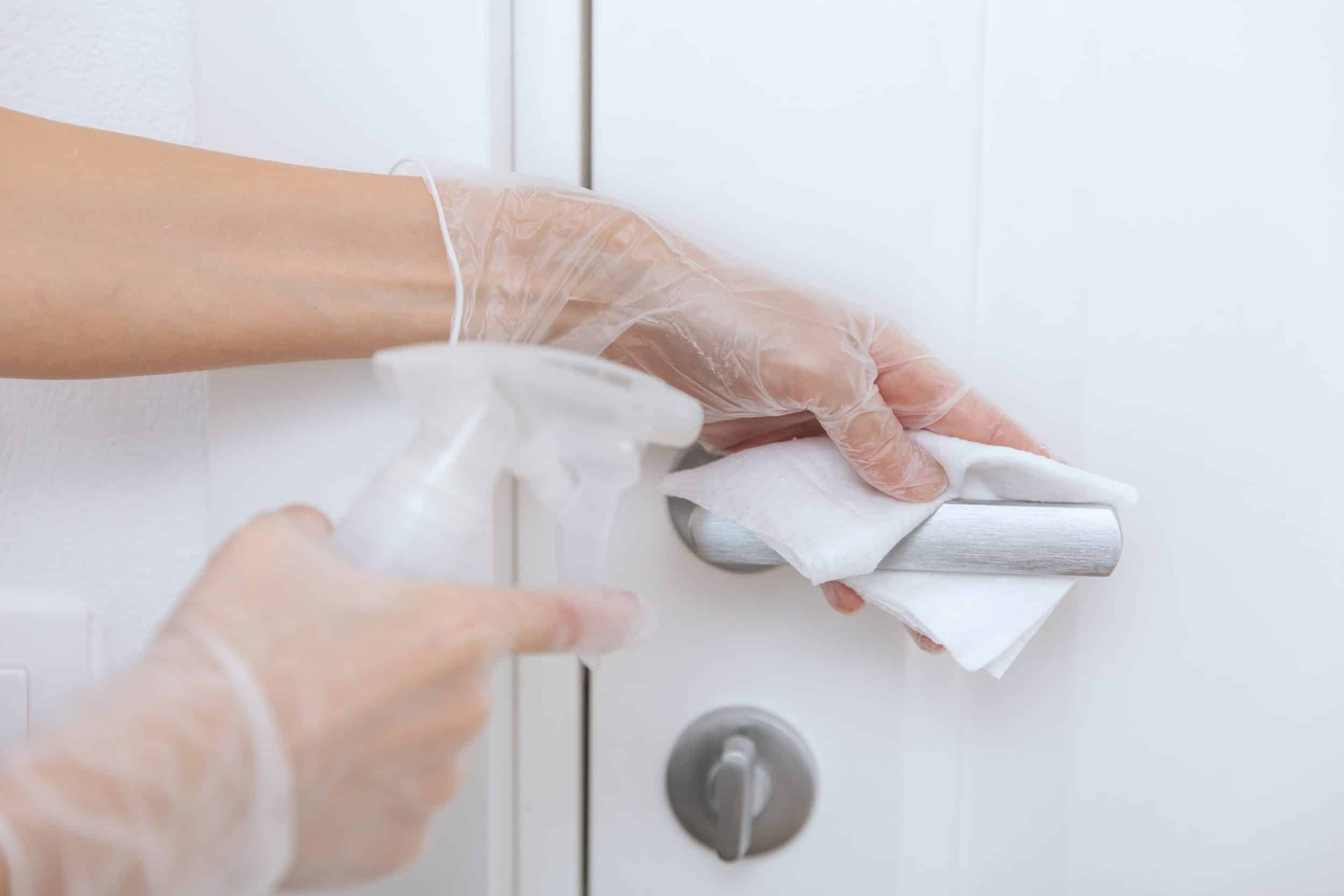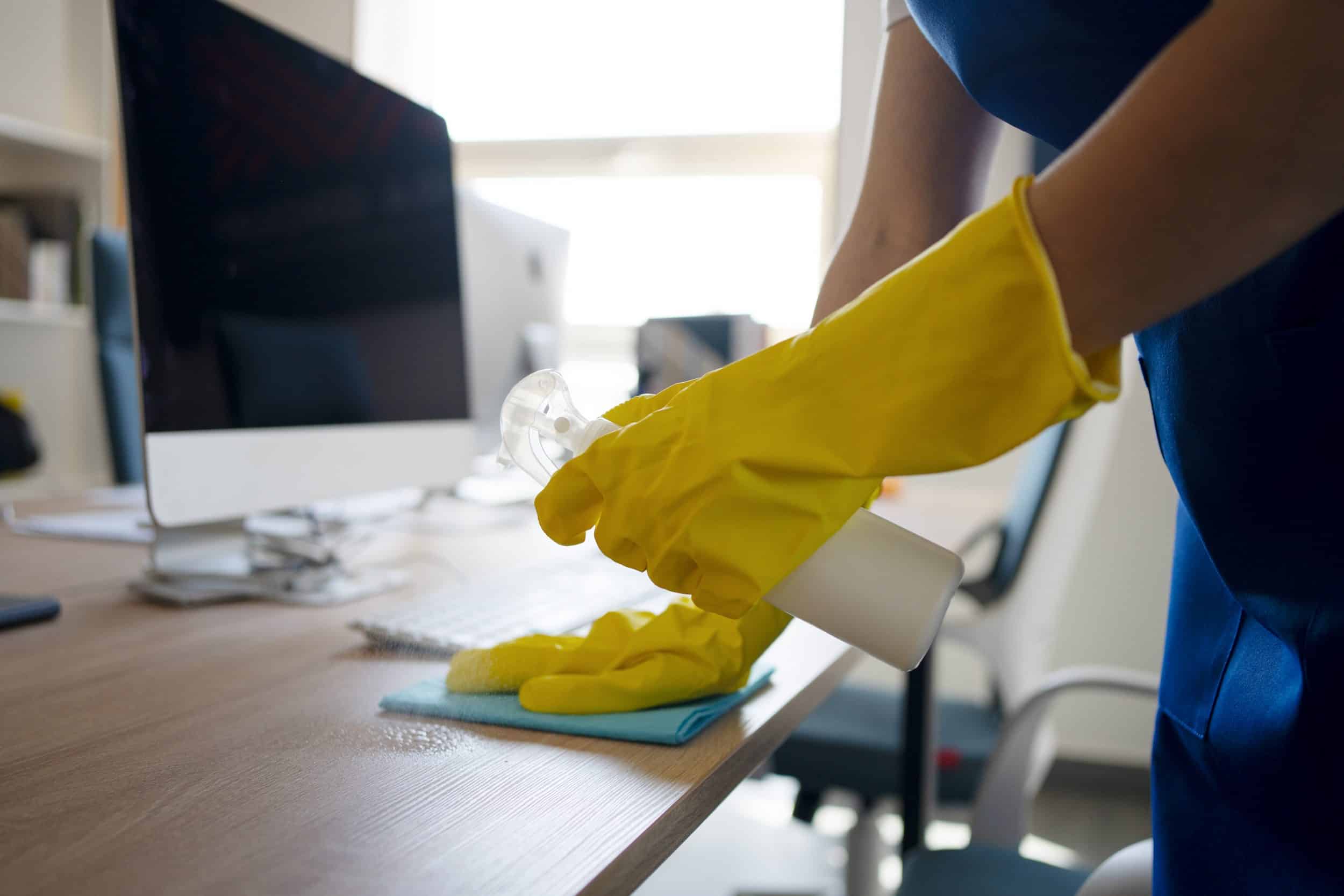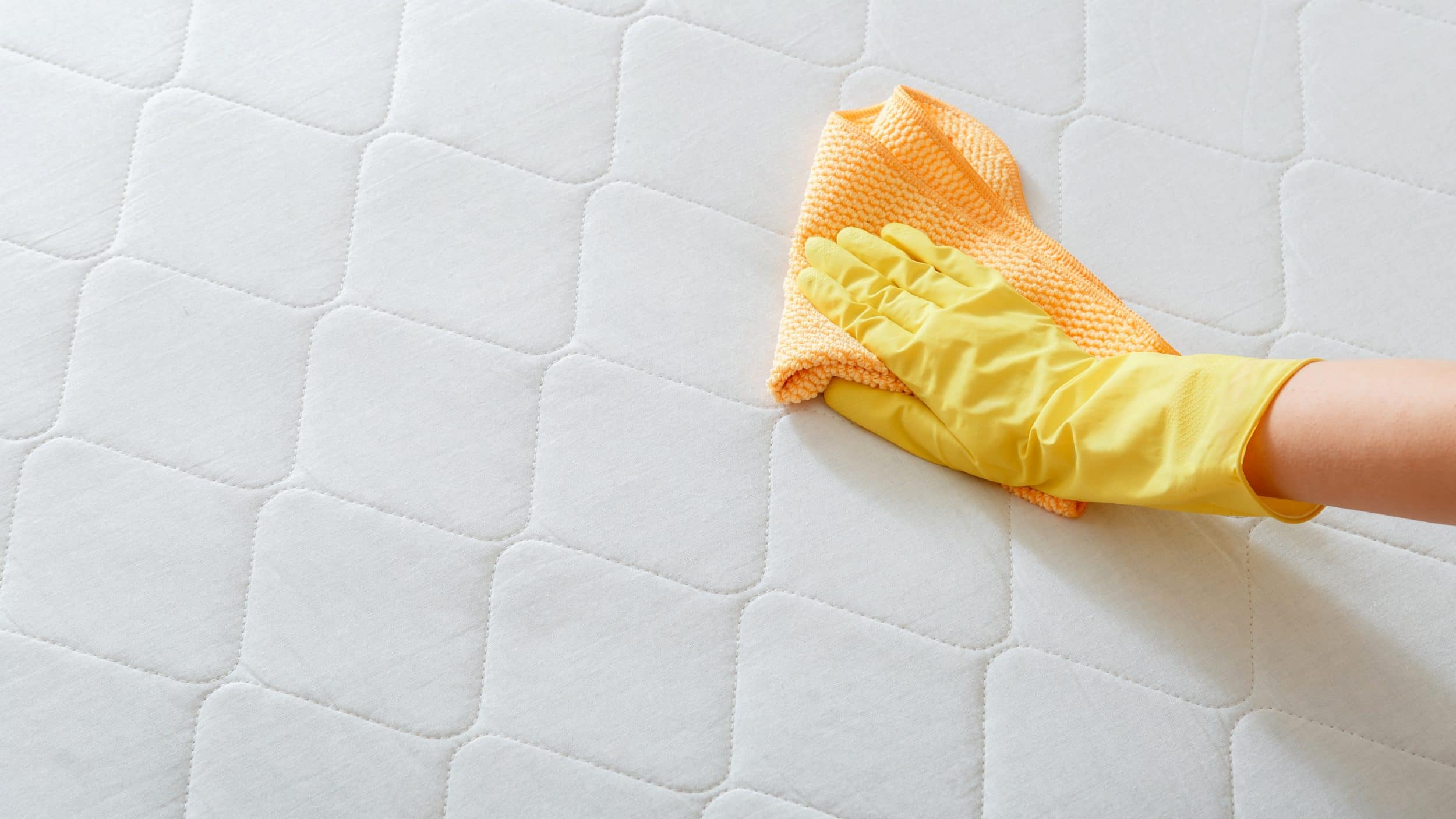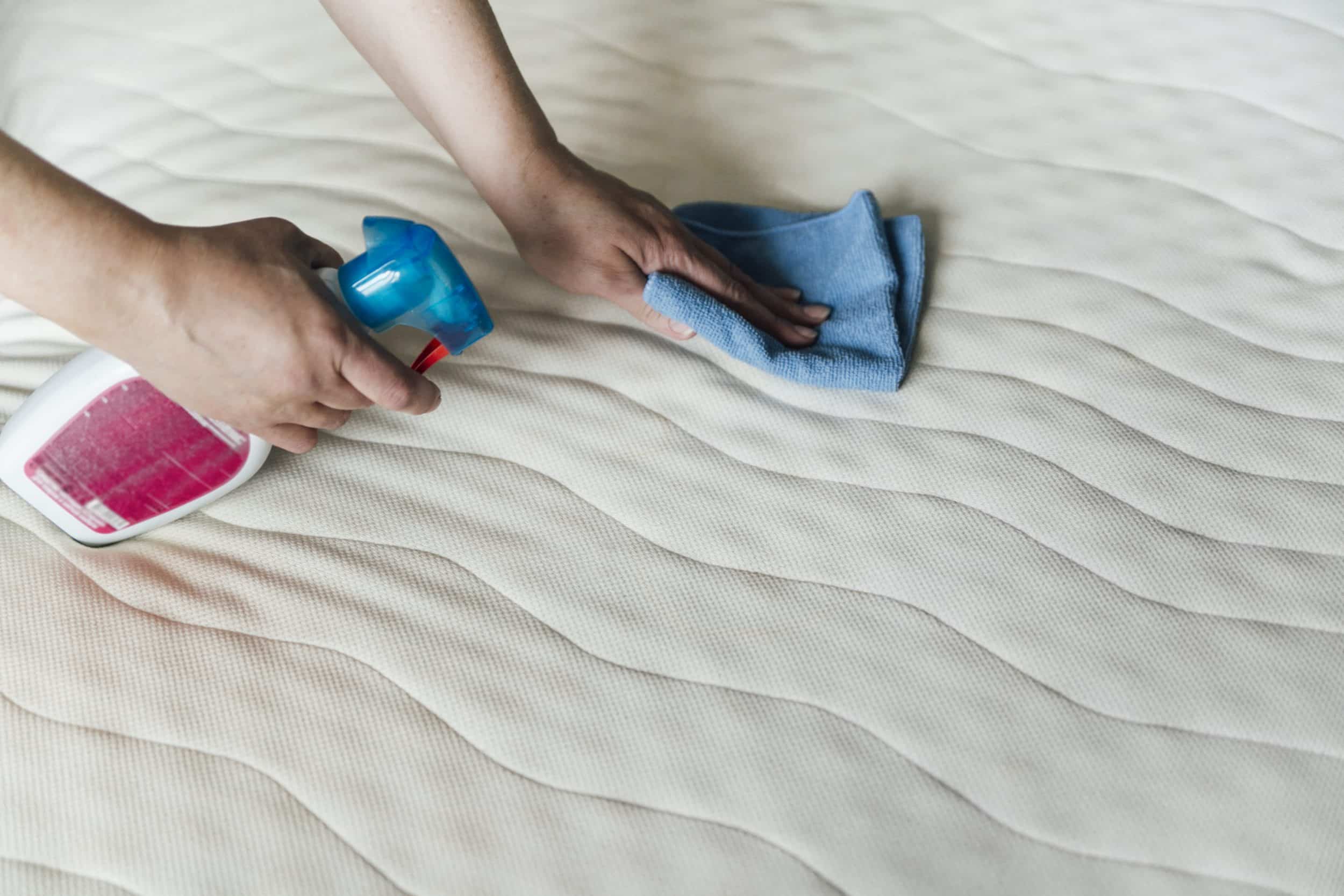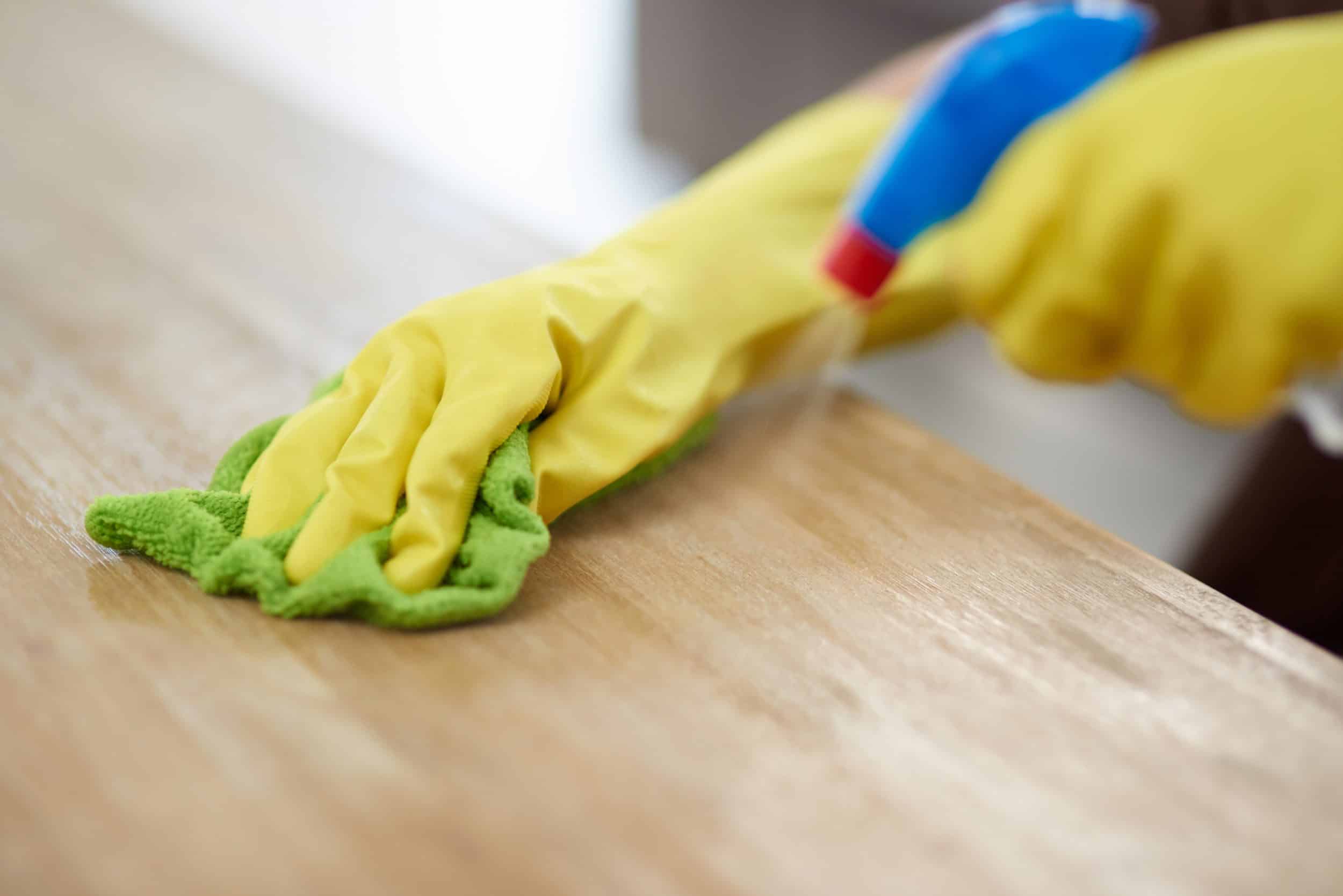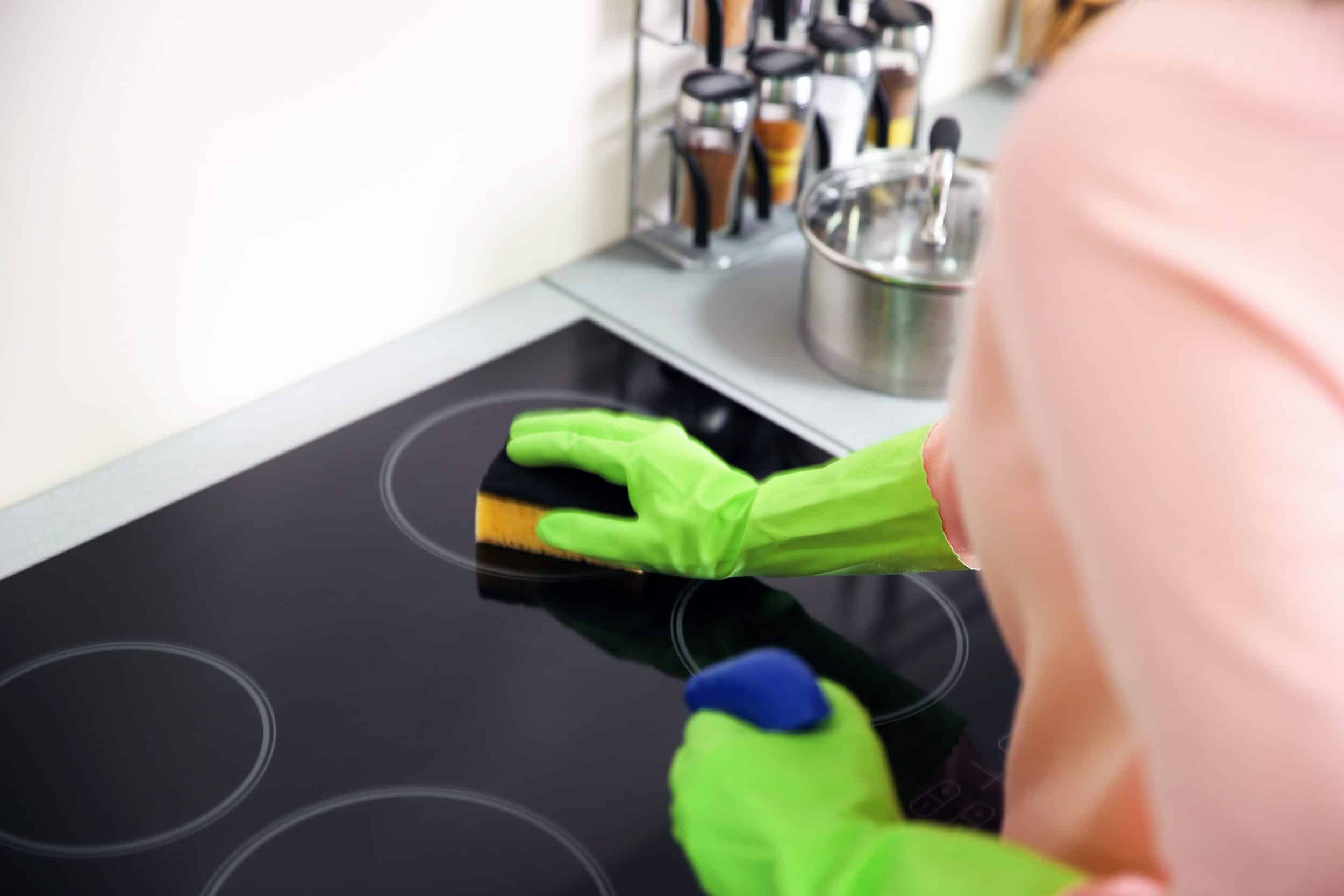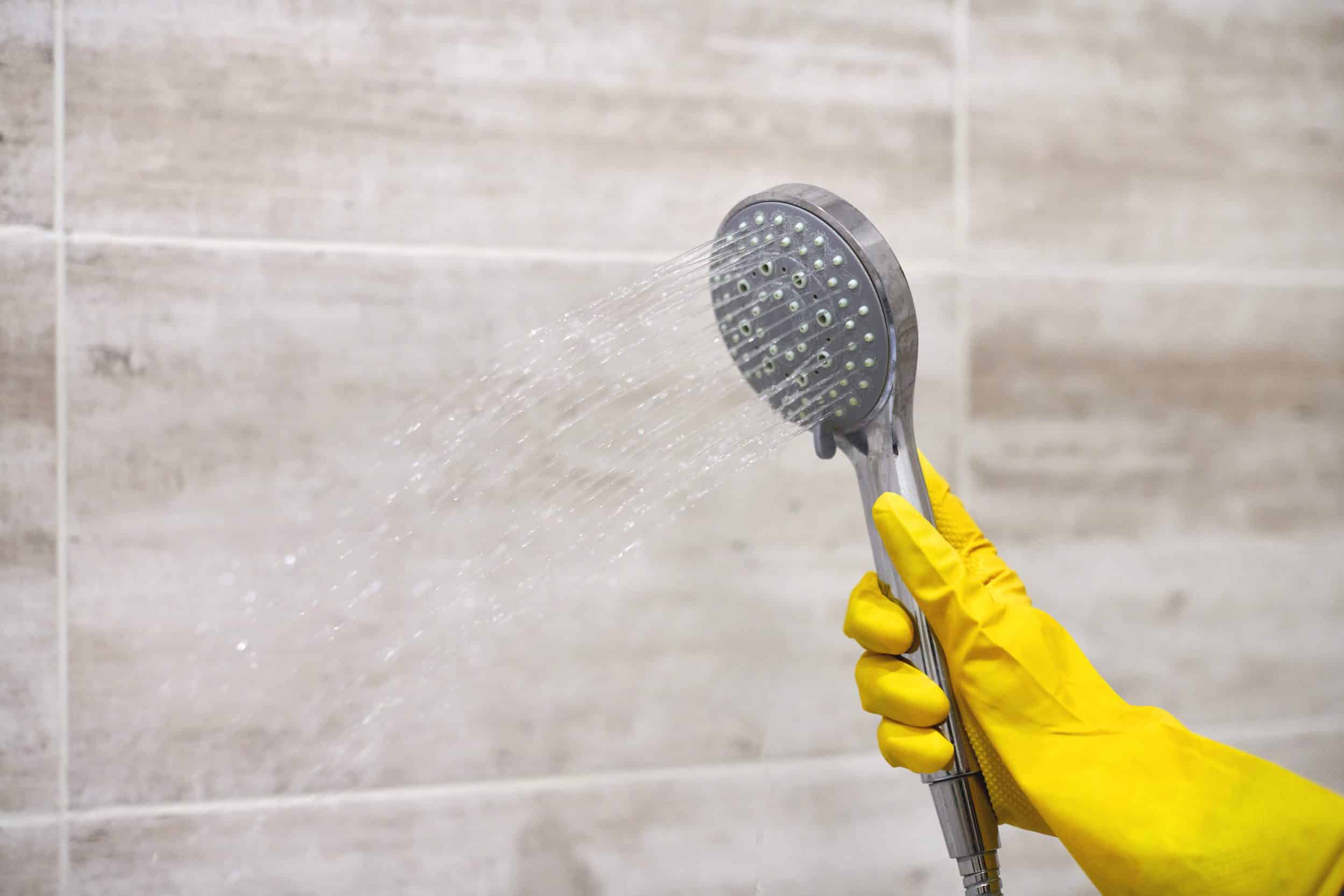Your kitchen doors, especially the cabinets and drawers, are often the most-touched surfaces in your home. They’re also constantly exposed to splatters and airborne grease from cooking, making them a magnet for grime. Keeping them clean not only improves the look of your kitchen but also helps prolong the life of your cabinetry.
Why kitchen doors attract grease and grime
Every time you cook, tiny particles of fat, oil, and steam are released into the air. These particles form a sticky film that settles on all surfaces, including your kitchen doors. This film acts like a magnet, attracting dust, dirt, and other airborne debris. Over time, this buildup can become a thick, difficult-to-remove layer of grime.
Best cleaners for wood, laminate & painted doors
Using the right cleaner for your door’s material is crucial to avoid damage.
- For Wood Doors: Avoid harsh, abrasive cleaners and stick to gentle, wood-safe solutions. A simple mix of a few drops of dish soap in a bucket of warm water is highly effective. You can also use a dedicated wood cleaner.
- For Laminate and Painted Doors: These surfaces are more durable than wood. A general-purpose kitchen cleaner or a solution of warm water and a small amount of dish soap works well. For tougher stains, a mix of baking soda and water can form a gentle paste.
Avoid using ammonia-based cleaners, as they can damage the finish on both painted and laminate surfaces.
Step-by-step guide to clean kitchen doors
Follow these steps to safely and effectively clean your kitchen doors:
- Prepare a Cleaning Solution: In a bucket, mix a few drops of mild dish soap with warm water. Wring a soft cloth until it’s damp, not dripping wet.
- Wipe the Doors: Starting at the top and working your way down, gently wipe all surfaces of the doors. Pay special attention to areas around handles and knobs, where grease tends to accumulate.
- Clean the Hardware: Use a cloth dipped in the cleaning solution to wipe down all handles, knobs, and pulls.
- Rinse Thoroughly: Use a separate clean, damp cloth with plain water to wipe away any soap residue from the doors and hardware. This step is important to prevent a sticky film from forming.
- Dry Immediately: Use a clean, dry cloth to thoroughly dry all surfaces. This prevents water spots and protects the wood from moisture damage.
Stubborn stains and how to remove them safely
For tough, built-up grime or scuff marks that won’t come off with a basic clean, try this method:
- Create a Paste: Mix a small amount of baking soda with water to create a thick, abrasive paste.
- Apply to the Stain: Gently rub the paste onto the stubborn stain with your finger or a soft cloth.
- Let it Sit: Allow the paste to sit for a few minutes to break down the grime.
- Wipe and Rinse: Wipe the area with a damp cloth, then rinse with a clean, wet cloth to remove all residue.
Preventive care to keep kitchen doors looking new
- Wipe Down Regularly: Make it a habit to wipe down your kitchen doors with a damp cloth every week to prevent grease from building up.
- Use a Range Hood: Always turn on your range hood or extractor fan when cooking to help remove airborne grease and steam.
- Address Spills Immediately: If a liquid or food splatters on your doors, wipe it off right away to prevent staining.

